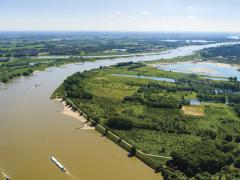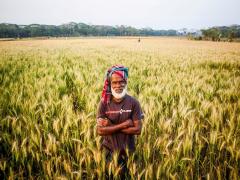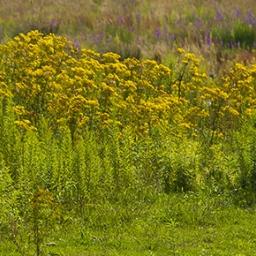The Common Agricultural Policy: Possible contribution towards achieving biodiversity targets for Dutch agricultural areas
In discussions on reform of the Common Agricultural Policy (CAP) of the EU, currently, the general opinion is that payments (made to farmers) within the framework of the CAP should be better linked to the provision of public goods. These public goods include, for example, biodiversity, landscape, environment, and climate. The objective of establishing such an improved link could be implemented in the CAP in several ways: by applying the objective to the direct payments to farmers under the single-payment scheme (resembling the current cross-compliance scheme), by defining certain areas where farmers receive flat-rate payments including any additional requirements, or by awarding payments for additional agri-environmental measures.
However, in this paper, the focus is on approaching the challenges surrounding public goods from a slightly different angle. Instead of determining how CAP instruments could contribute to the supply of certain public goods, we have tried to identify the need for these goods. Subsequently, we assessed what would be required in terms of agricultural land, agricultural measures, and their associated costs. This information could contribute to current policy debates on reforming both the CAP and the EU budget.
This paper by PBL Environmental Assessment Agency mainly provides an assessment of the area and budget requirements for achieving biodiversity objectives in agricultural areas in the Netherlands. This study is meant to contribute to the actual conceptualisation of future policies.
The results have been placed within the context of current agricultural areas and spending within the framework of biodiversity-related measures within the CAP. The paper focuses on biodiversity only. It is based on parts of the Dutch report Contribution of the CAP to achieving environmental, nature and landscape policy targets – Exploration of the possible use of the Common Agricultural Policy which was published in 2010.
Biodiversity in agricultural areas has declined over the past decades. The root cause is that, for agriculture, production costs are generally lower in an efficiently organised landscape, while important natural values thrive more in old cultural landscapes. Species numbers have declined because of more intensive use of agricultural areas, and environmental conditions have been tailored to the demands of agriculture in such a way that production has increased. In the Netherlands, meadows and other marginal lands (less suitable for farming) hardly exist anymore. In addition, small landscape elements, such as wooded banks, small ditches, and hedgerows, which provide a habitat for species living in agricultural areas, mostly have disappeared.
Finally, efficiency in agricultural production has led to less residual yield, which, left out on the field, is an important food source for many species. Because of these circumstances, less species survive. The decline in biodiversity in agricultural areas is also visible in other EU countries (EEA, 2007).
See also
This document is only available as PDF
Authors
Specifications
- Publication title
- The Common Agricultural Policy: Possible contribution towards achieving biodiversity targets for Dutch agricultural areas
- Publication date
- 6 December 2010
- Publication type
- Publication
- Publication language
- English
- Product number
- 403




